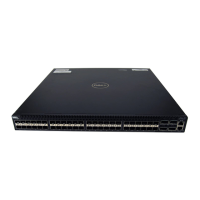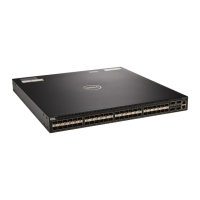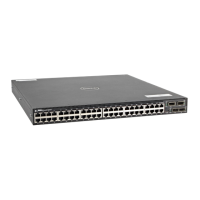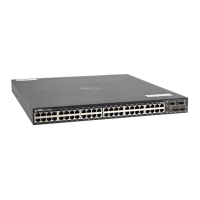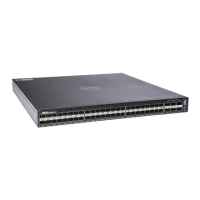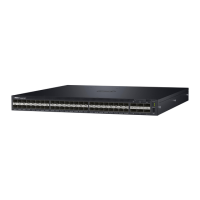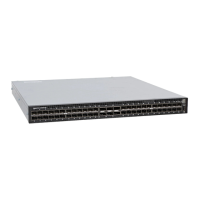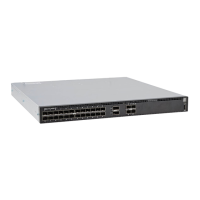operator (OPTIONAL) Enter one of the following logical operands:
• eq = equal to
• neq = not equal to
• gt = greater than
• lt = less than
• range = inclusive range of ports (you must specify two
ports for the port parameter.)
port port (OPTIONAL) Enter the application layer port number. Enter
two port numbers if you are using the range logical operand.
The range is from 0 to 65535.
The following list includes some common TCP port
numbers:
• 23 = Telnet
• 20 and 21 = FTP
• 25 = SMTP
• 169 = SNMP
destination Enter the IP address of the network or host to which the
packets are sent.
count (OPTIONAL) Enter the keyword count to count packets the
filter processes.
byte (OPTIONAL) Enter the keyword byte to count bytes the filter
processes.
log (OPTIONAL, E-Series only) Enter the keyword log to enter
ACL matches in the log. Supported on Jumbo-enabled line
cards only.
dscp (OPTIONAL) Enter the keyword dcsp to match to the IP
DCSCP values.
order (OPTIONAL) Enter the keyword order to specify the QoS
order for the ACL entry. The range is from 0 to 254 (where 0
is the highest priority and 254 is the lowest; lower-order
numbers have a higher priority). If you do not use the
keyword order, the ACLs have the lowest order by default
(255).
monitor (OPTIONAL) Enter the keyword monitor when the rule is
describing the traffic that you want to monitor and the ACL
in which you are creating the rule is applied to the monitored
interface.
NOTE: For more information, refer to the Flow-based
Monitoring section in the Port Monitoring chapter of the
Dell Networking OS Configuration Guide.
244
Access Control Lists (ACL)
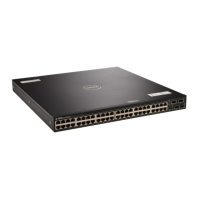
